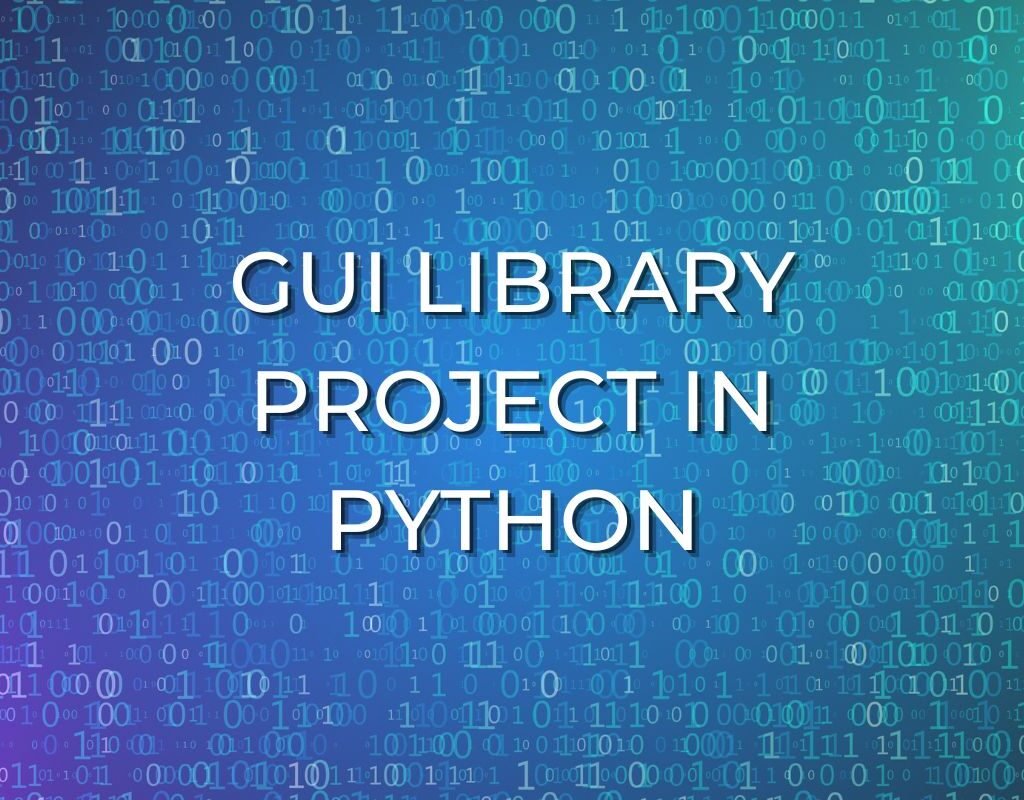The Graphical User Interface Library Project in Python is suitable for practice. Anyone who is willing to make a project for their final year submission can leverage the source code.
It can be used by students from Class 11 and 12 to develop a custom project for their submissions. An MTech, BTech or a PhD aspirant can also take reference of this source code for their final year project. Anyone who is willing to create a unique project can use the asset.
Reach out to us on WhatsApp for some awesome pro tips and customization help and efficient plagiarism checking for your research paper and thesis report. Learn how to Publish Your Research Paper in an International Journal for Free.
Introduction to Graphical User Interface (GUI) Library Project in Python
Tkinter is a python library which provides a quick and easy way to create GUI (graphical user interface) applications. It is a cross-platform library which runs on most platforms, including Windows, Mac OS and Linux. Tkinter makes it easy to create simple, powerful and interactive applications. It’s both intuitive and powerful.
The library functions with all versions of Python currently in use and comes bundled with the standard distribution of Python. Tkinter provides access to an extensive set of widgets such as labels, menus buttons, text boxes, progress bars and more. In addition to this it also offers tools for working with graphics, events and dialogues. With Tkinter you can easily customize the look and feel of your application by using different themes or creating custom widgets for unique interfaces.
Project Objectives
- Build a library of user-friendly graphical components (controls, buttons, menus etc) that can be used to simplify web and application development
- Create an easy-to-use GUI editor to allow developers to quickly customize the components to meet their unique design requirements
- Incorporate ways for developers to easily theme their applications using various color schemes and font styles
- Design a flexible architecture for the library so that it can be easily modified as new technologies/standards evolve
- Provide comprehensive documentation on how to use and extend the library for developers
- Ensure compatibility across all major browsers and responsive web design environments
- Develop automated unit tests with well-defined test cases to validate functionality in different browser/environment conditions
Proposed System
The proposed system will provide a web-based graphical user interface (GUI) library for developers. The main components of this system are as follows:
User Interface
The user interface of the GUI Library project should be easy to use and intuitive. The developers should be able to quickly integrate it into their applications without having to spend too much time. It should be designed using a modern user interface style, with easily distinguishable elements like buttons, menus, and text fields. The UI should also support tooltips so that users have an easier time understanding how to use the library features.
Data Structures
The data structures used for storing and manipulating graphical objects within the library need to be efficient in terms of memory usage and execution speed. Different data structures may be suitable for different types of objects (2D shapes versus 3D models). So the library should have options for choosing the best structure for each type of object.
Rendering APIs
A variety of APIs should be supported for rendering graphical objects within the GUI Library project, including both hardware-accelerated APIs such as OpenGL or Direct3D and software-based rasterizers such as SWF or Cairo. External plugins will likely be necessary if additional rendering technologies need to be supported in the future, so plug-in support needs to be taken into consideration when designing the system architecture.
Third-Party Libraries
The GUILibrary project may rely on existing third-party libraries for certain components such as multimedia playback or font rendering (e.g., Freetype). Proper integration of these libraries needs to be considered so that they work seamlessly together with other parts of the system and do not introduce any new problems or dependencies.
Scalability & Performance
As development teams begin integrating a GUILibrary project into their own applications, it’s important that performance scaling alongside growing application complexity is taken into account from day one. Designing a modular architecture allows developers to replace certain blocks with different versions depending on their performance requirements while simultaneously keeping code maintainability intact.
Additionally, if developers anticipate having further growth beyond what was initially planned, then scalability housekeeping practices such as abstracting code and using profiling tools may help improve overall performance over time without requiring disruptive redesign efforts later on down the line.
[ DOWNLOAD ASSETS ]
[ GET INSTANT HELP ]
